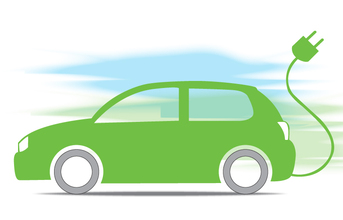

In-wheel electric vehicles
The option of mounting the drive train of the EV in the wheel of the vehicle ensuring that all of the motor's output power isavailable at the wheel without any mechanical transmission losses, is foreseen to be a very good choice for vehicle traction. There are significant advantages with such a topology, such as:
• Releasing vehicle space for passengers, tractions batteries etc.
• The torque at each wheel can be independently controlled, giving a true 4 wheel drive
• True wheel-slip based control allows improved vehicle response
and shorter braking distances
• Removal of drive train components gives designers greater freedom to design vibration free, comfortable vehicles
• Elimination of gears and differentials produces a simpler and more reliable overall mechanical design.
Challenges often perceived with in-wheel motors are related
to ride and handling, due to an increase in the vehicle un-sprung mass and safety issue when a motor faults occurs developing a dangerous torque disturbance. The followings are the criteria for selection and design of such drive motor:
• high instantaneous torque and continuous torque density
• high torque at low speed for starting & climbing
• fast torque response for use in braking (ABS)
• low cogging torque & torque harmonics for refined drivability
• high efficiency over constant torque and power range
• high fault tolerance
• good overload capability for uphill climbing
(Continued on the next page)



























